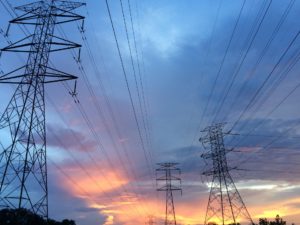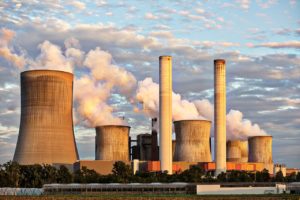
With an increasing need to rely on natural resources for energy, scientists are exploring every avenue. Currently they are examining the possibilities of harnessing the power of evaporation into a renewable energy. This option is being further explored by scientists at Columbia University in New York. Read on to find out more about their research.
Can Evaporation Provide the Necessary Power?
 Studies show that the total power available from evaporation driven engines could be up to 325 gigawatts. That’s more than 69% of the United States electrical energy generation rates. That means that energy generated from evaporation could provide powers of up to 10 watts per square meter, three times that of wind power. Solar power drives evaporation which is key in the water cycle which in turn effects renewable energy resources like wind and hydropower.
Studies show that the total power available from evaporation driven engines could be up to 325 gigawatts. That’s more than 69% of the United States electrical energy generation rates. That means that energy generated from evaporation could provide powers of up to 10 watts per square meter, three times that of wind power. Solar power drives evaporation which is key in the water cycle which in turn effects renewable energy resources like wind and hydropower.
What Does the Research Entail?
Research into the possibilities of harnessing power from evaporation into a renewable energy is being studied using lakes and reservoirs larger than 0.1 square kilometers in the United State excluding the Great Lakes.
Researchers reveal the findings of their studies using water responsive materials and devices. Advances in these water responsive devices can show the ability to convert energy from evaporation to practical use. They attain the work through the cycle of absorbing and rejecting water during evaporation. The water-responsive materials can then be incorporated into evaporation-driven engines that utilize energy when they are placed above a body of water. As methods of energy conversion become more efficient, these devices could serve as a means to obtain energy through natural evaporation from water reservoirs. They also estimate that with the use of these devices, the total amount of evaporative water lost from these bodies of water could be cut in half.
Benefits of Evaporation
Scientists also note that one of the problems with current renewable energy sources like wind and solar energy, is their irregular availability. For example, wind power can only be available when the wind is blowing and solar can only be available when the sun is shining. In order to maintain a stable electrical grid, with supply matching demand, it is critical to have efficient energy storage.
In the case of using evaporation, researchers found that power output from evaporation-driven engines could be controlled by using water’s heat capacity to store and release energy. They explain that they can store energy thermally in the water below in an evaporation driven engine. In this way, they can make sure that there is always a varying power supply that will match demand.
Potential Drawbacks of Evaporation
 One potential problem with this system is that the materials and devices used to harness the energy could affect freshwater resources which, could in turn, affect the use of water in its withdrawal rates, quality and recreational use. However, because of the huge areas of bodies of water in the United States, researchers predict that the consequences of this issue will be minimal. They further argue that regions that are affected by water scarcity may actually benefit from these methods due to the fact that evaporation rates will be reduced.
One potential problem with this system is that the materials and devices used to harness the energy could affect freshwater resources which, could in turn, affect the use of water in its withdrawal rates, quality and recreational use. However, because of the huge areas of bodies of water in the United States, researchers predict that the consequences of this issue will be minimal. They further argue that regions that are affected by water scarcity may actually benefit from these methods due to the fact that evaporation rates will be reduced.
As technology advances with an increasing emphasis on turning to renewable energy sources, new developments are being made every day. Using evaporation for energy appears to have a number of advantages. Though still in the planning stages, let’s see if we can make this new solution a reality.

